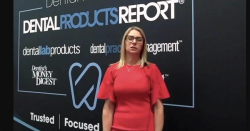- About Us
- Advertise
- Editorial
- Contact Us
- Terms and Conditions
- Privacy Policy
- Do Not Sell My Personal Information
© 2025 MJH Life Sciences™ and Dental Products Report. All rights reserved.
Dykema 2024 DSO Conference: DSO Leaders Share 6 Areas of Focus for Next 6 Months
Highlights of the hot topics and expert insights being discussed during the recent Dykema DSO Conference in Colorado.
This year has been like a tsunami, with a deluge of difficult business conditions including high supply costs, high labor costs, high interest rates, and low insurance reimbursements overwhelming many dental practices.
At the Dykema DSO Conference in Denver on July 10, dental group executives shared how they’re faring and where they are focusing their attention for the rest of the year.
Standardization, Interoperability, and Visibility of Data
One hot topic at the Dykema DSO conference was standardization and efficiency.
“Getting all of our practices on one unified, cloud-based system was absolutely imperative for us. We’re completing our rollout of the Denticon practice management system across all of our GP practices and adding Cloud 9 practice management for ortho right after that,” says Jason Heffelfinger, CEO of Dental Care Alliance, a DSO with more than 400 affiliated practices in 26 states. With both Denticon and Cloud 9 produced by Planet DDS, the platforms are integrated so patient files can be entered or accessed from either application.
“When you have one system that you can utilize across all your practices, it just makes it easier for everybody to execute. When we think about staffing, doctor days, data—it just makes it so much easier to understand where you have opportunities. Then you can thank them for the work they do, and of course, you can course-correct when necessary,” Heffelfinger explains.
AJ Acierno, DDS, president of clinical operations for Smile Brands, agrees. The company has more than 650 affiliated practices in 32 states.
“We’re an acquisition-based company and that means we inherited a ton of different systems,” Dr Acierno says. “It means everything to be able to standardize the technology and have all your data all in one place. It lets you measure metrics, apples to apples.”
Increasing Same-Store Growth Through Systems
OMS360 drove 40% organic growth in the first half of 2024 across its oral surgery business after implementing a new patient workflow, says its CEO, Trevor Maurer.
“We wanted to understand why some of our surgeons were more efficient than others, so we performed a comprehensive analysis of surgeons and workflows. We literally did a time study of our patient journey, the staff, and even the surgeons. We needed to know who was doing what, and the impact that had on the entire patient experience. From this, we identified six phases of the patient journey and detailed how long each took for our highest-performing practices,” Maurer says.
When the research came back, the data showed that it wasn’t just something the surgeons were doing but the systems they had in place that made them successful. OMS360 then modeled the stages across its practices:
- Patient access
- Scheduling
- Pre-appointment, such as insurance verification
- Consultation and treatment planning
- Treatment
- Account reconciliation
“We systemized the six phases and let each team know where the inconsistencies are in their methods. Not everyone will want to make a change, and it is truly their choice,” Maurer says. “Our commitment is to enable the doctors to practice at the top of their license. If they want to do it, OMS360 can get them there. Surgeons that were under $4 million have increased to over $6 million annually.”
“We’ve been focusing on same-day care initiatives,” says Teresa Williams, the chief financial and operations officer of Dental Express, a dental group with 6 affiliated practices in California. “We’re taking a hard look at what’s happening for each of our patients when they’re in the building. People want to get care immediately, so we’re making it easy for them through third-party financing, building larger teams so we can provide same-day care, and even expanding the footprint of our offices.”
Same-Store Growth Through Payer Mix Changes
Many DSO leaders predicted COVID-19’s impact on the global and local economy, from supply chain issues to higher prices for goods, higher wages, and higher interest rates. Himesh Kana, DMD, managing director of Dental Depot DFW, began evaluating their systems and payor mix in 2022. Dental Depot has 37 affiliated practices in Texas, Oklahoma, Arizona, and Missouri.
“We looked at our phones, we looked at our treatment acceptance rate, we looked at training, we looked at all of our payors, we looked at our data, and we looked at our patient volume,” Kana says. “We have a really solid membership model with Subscribili; it’s now our second highest segment of commercial payors, and our per visit output on our membership model is much higher, by 20% to 25%.”
The Smilist Management, a DSO with almost 100 affiliated practices in the Northeast, is focusing on revenue cycle management to drive same-store growth too.
“We negotiated a rate increase on our PPO plans. We tightened up on our RCM processes and our accounts receivable,” says Thomas Passalacqua, director of business development. “We added automation to our RCM, which has really improved patient communication, insurance verification, and collection rates.”
Artificial Intelligence to Increase Case Acceptance
Technology is another area that dental support organizations are leveraging to increase same-store growth.
“One of the newest technologies we’ve implemented is Pearl AI, which integrates directly into our Apteryx digital imaging,” says Bradley Dykstra, founder of MI Smiles Dental Group, which has 7 affiliated locations in Michigan. “A picture’s worth a thousand words, and it’s really helped the patients to visualize what we’re talking about. The clinicians like it, and it’s a time-saver for the hygienists because it shows where there is radiographic bone loss. For me, it’s a great way to gauge how each of the associates are diagnosing.”
“We have recently partnered with Overjet to incorporate AI into our operational and clinical processes,” says Kyle Smith, chief financial officer at My Community Dental Centers, a non-profit dental support organization with almost 50 locations in Michigan. The outcomes have been impressive, showcasing enhanced diagnostic accuracy, streamlined claim submissions, and improved reimbursements from payers.”
DSO leaders are evaluating other AI-powered technologies including call center bots.
“This new generation (of patients) doesn’t want to deal with people, right?” explains Dr Kana. “It’s inevitable that in 5 to 7 years, we’re going to see a lot of bots handling phone calls and bot-trained scheduling.”
New Technologies Elevating Patient Care
A lot of the discussions at Dykema centered around new technologies and the results people have seen.
Dental Care Alliance is using Guided Biofilm Therapy (GBT), which discloses the location of plaque and removes it using air and piezo technology from EMS Dental instead of traditional scaling, root planning, and polishing paste.
Dental Express has expanded its intraoral scanner technologies and is looking to bring in AI-based scheduling technology to reduce no-shows and last-minute cancellations.
Jill Nesbitt, the founder of Optimize Dental Consulting, hosted a technology workshop at the Dykema DSO Conference with more than 40 DSO leaders from operations and IT. They discussed the emergence of new dental analytics companies that pull in data from multiple software systems including accounting, human resources, call centers, and practice management systems to help dentists and managers have a holistic view of the data driving their profit and loss statements.
Some practice management systems like Denticon are moving away from branding themselves as an all-in-one solution and to a dental operating system model, where dental practices can choose to read, share and write back information with third parties via secure APIs.
“People want the freedom to be able to integrate different software solutions into their practice management system. You see that with RCM, for example. They want to be able to verify insurance, submit claims, and reconcile payments all within their PMS, without having to launch another application,” says Dee Fischer, the co-founder of a DSO with 6 affiliated locations and is one of the best-known consultants for group practices.
Staffing Shortages and the Importance of Culture
Staffing remains an issue for almost every dental group, especially when it comes to recruiting hygienists and dental assistants.
“I’ve hired a full-time HR director to help us because it takes so much time to hire,” says Robin Reich, DDS, a past president of the Georgia Dental Association and the founder of Reich Dental Centers, a dental group with 4 locations.
“We have to be more flexible. For example, we have 2 hygienists who are pregnant, and they’re going to job share.”
“At My Community Dental Centers, we are experiencing this growing demand from our team members for shorter workweeks and alternative schedules,” says Smith. “The challenge arises from the need to be an adaptable employer and foster a culture that emphasizes work-life balance and well-being while managing a reduced workforce and a surge in patient demand that is at unprecedented levels.”
Multiple DSO leaders cited some of the changes employees and new hires are requesting, including:
- Gas stipends
- Flexible work hours
- Work-from-home opportunities
- Higher salaries now instead of generous retirement plans
The staffing shortage is causing companies to recruit outside of dentistry. Fischer suggests hiring people for their personalities and skills sets:
- Bartenders for front office positions
- Realtors and jewelry store salespeople for treatment presentation and collections
One tip: Evaluate the salaries in your geographic area quarterly to ensure you’re competitive. If the local Starbucks is paying $16 per hour, then you may find it hard to hire somebody for less.
Advice for Dental Practices and Emerging DSOs
“Culture is the first thing. The second is operations: build a great platform. Find those partners that you can grow alongside and really lean in with them,” says Jason Heffelfinger, CEO of Dental Care Alliance.
“For anyone looking to scale up, take a hard look at what’s made you successful and ensure you have documented those processes. Codify your SOPs so that you can replicate them,” adds Williams of Dental Express.
“If you’re looking to scale up, really sit down and look at your available cash flow,” recommends Fischer, the consultant who has worked with more than 1,000 practices. “Where people get in trouble is when they don’t understand their cash flow. If you do, then you know what you really have to work with and you can expand staff, expand hours, expand services, or expand locations.”
Lastly, take care of your people.
“We make sure all of our doctor contracts are designed for a minimum of 3 to 5 years, and we reward them with a loyalty bonus once they hit those,” explains Hoss Said, managing director of Massoumi Dental Corporation, a dental group with 6 affiliated practices in Southern California. “Our doctors have to have pride in what they do, and they make their own decisions with clinical autonomy.”
Omid Barkhordar, DDS, and his brother Hamid Barkhordar, DDS, MMSc, are co-presidents of Care Dentistry Group, a DSO with 16 affiliated locations in California.
Hamid Barkhordar has this advice for dental groups that are looking to grow.
“Keep going. It’s going to be hard. There are a lot of obstacles, but if you build a strong foundation, you focus on what you want your organization to be, then you can achieve it.”



